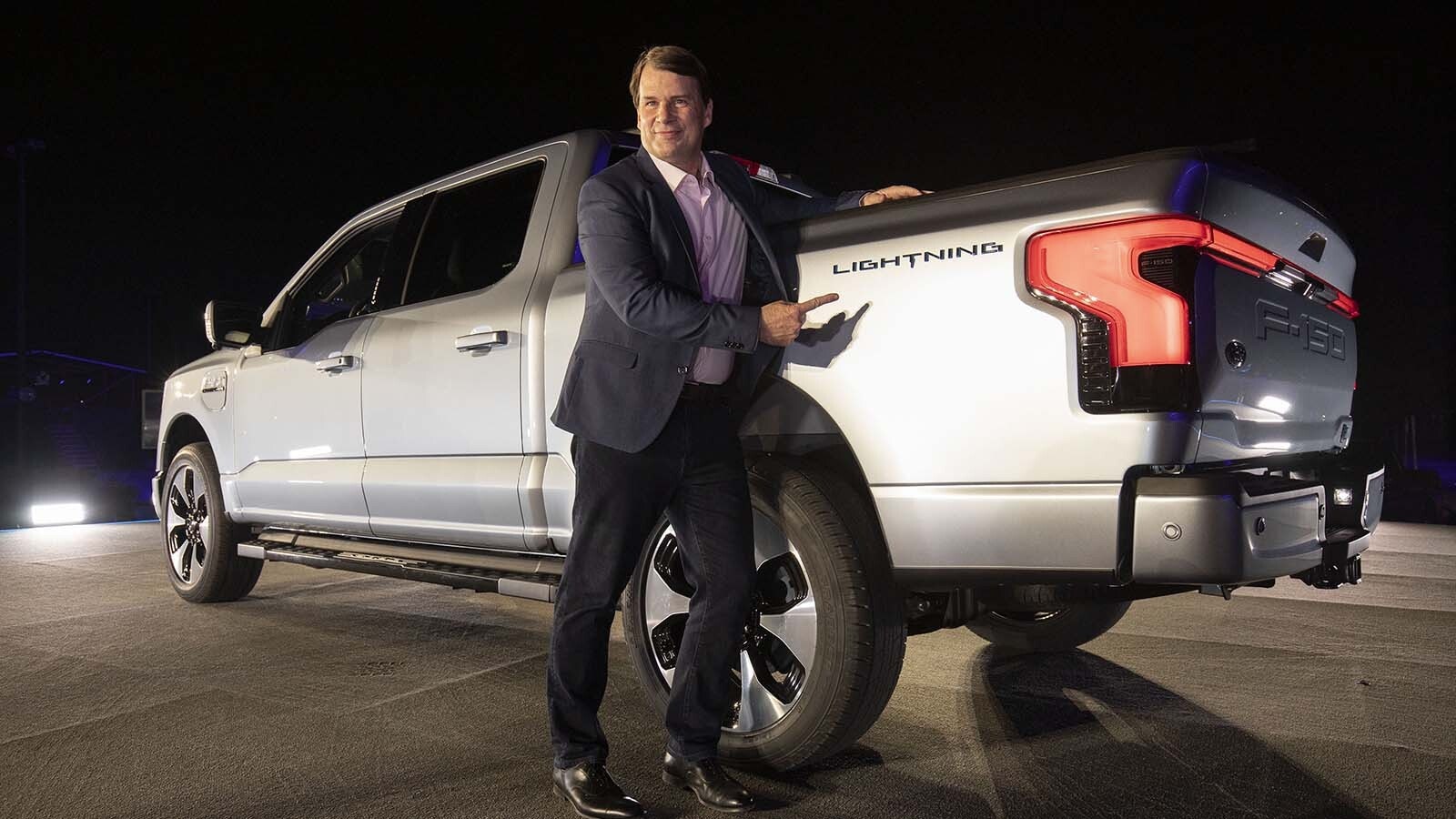Ford is dropping $50 billion into its electric vehicle (EV) product line, with lots of support from taxpayers.
With that level of investment, you’d think the company’s CEO would be aware of one of the main issues consumers have with the product.
On a road trip across California, Ford CEO Jim Farley charged his Ford F-150 Lightning at a Level 2 charger. He spent 40 minutes charging the vehicle and was only able to get up to a 40% charge, which would give him about 90-130 miles of range until he’d be calling a tow truck.
Farley called it a “reality check.”
Energy watchdog Robert Bryce told Cowboy State Daily that Farley’s experience with his own product “sets the new bar for corporate cluelessness.”
What Customers Go Through
According to Bryce, the Department of Energy is giving Ford a $9.2 billion low-interest loan for three battery factories, $6.7 billion in federal tax credits for a fourth factory and $1.7 billion in state and local subsidies.
On his educational road trip, Farley drove the Lightning from Silicon Valley to Las Vegas. Along the way, he stopped to charge the vehicle at a Tesla Supercharger near Coalinga, California, right off of Interstate 5.
While Tesla has agreed to open its Supercharger stations up to Ford electric vehicles, that won’t happen until next year.
So, Farley charged at a Level 2 charger, which is a step down from the Supercharger, and 40 minutes of charge would give him less than two hours of driving.
“It was a really good reality check (about) the challenges of what our customers go through,” Farley said.
Date With Disaster
Bryce said it’s surprising that the CEO of the company is only now coming to understand one of the main drawbacks of EVs, which is that charging takes a lot longer than filling up a tank.
“What PR genius thought of that stunt?” Bryce said.
As Bryce reported on his Substack, Ford reported a $1.08 billion operating loss on its EV business during the second quarter of this year. The company sold 14,843 EVs in that time, meaning it lost more than $70,000 on each vehicle it sold.
Bryce documented that in 2022, it lost $66,446 for every EV it sold.
“Their plan is to increase their EV production 10-fold,” Bryce said. “Ford is making a date with disaster here, and Farley’s video, I think, just confirms it.”
Electric With Benefits
Not every Lightning owner is unhappy with the vehicles.
Patrick Lawson has driven his Rivian and Ford F-150 Lightning across Wyoming highways, and he’s said the vehicles are great.
Lawson, who is executive manager with Wind River Internet, testified last week to the Wyoming Public Service Commission that the company is switching over to electric vehicles, as it would cut the cost of their fleet by half over the life of the vehicles.
Lawson told Cowboy State Daily last week that his F-150 Lighting starts during extreme cold, whereas the company’s gas vehicles won’t, and he can use the battery for on-site power.
The company’s employees charge the vehicles overnight at the office, and that gives them enough range to provide their services, Lawson said.
Home Depot Thing
They are not without their shortcomings, however.
Aaron Turpen, a Cowboy State Daily automotive writer and supporter of electric vehicles, reviewed the Ford F-150 Lightning in February.
“It’s perfect for people who don’t need to tow or haul anything,” Turpen said in an interview. “You can do the Home Depot thing, but if you’ve got more than 100 miles to go and you’re going to be carrying weight or pulling a trailer, it’s probably not the truck for that job.”
That’s on top of the long charge times, which Turpen said make the trucks less than ideal for trips outside of urban areas.
Turpen said that there’s a shift in the EV consumer world that’s starting to bring some of these issues to light. It’s no longer just tech enthusiasts or wealthy environmentalists buying EVs. That group of consumers overlooks the limitations for the joy of driving cars perceived to be more environmentally friendly and eco-cool.
“Now we’re getting into mainstream buyers, and they have a different expectation,” Turpen said.
Commuter Vehicles
Turpen has a Level 2 charger installed in his garage, and charging up the Lightning, he said, takes nine hours to go from near empty to a full charge.
According to the company specifications, a Lightning owner can charge on a Level 2 charger from 15% to 80% in eight hours. On a fast charging station, it can be done in 41 minutes.
Farley was charging on the same level of charger as Turpen has at home, so he should have planned to stay overnight if he wanted a full charge.
Turpen said the nationwide infrastructure needed to make EV roadtrips easy has a long way to go. Charging stations are notoriously unreliable. There may be lines, and they may not be as fast as advertised.
“If you’re just commuting, it’s great,” Turpen said. “But there are just too many variables until we have a bigger infrastructure to go cross country.”





